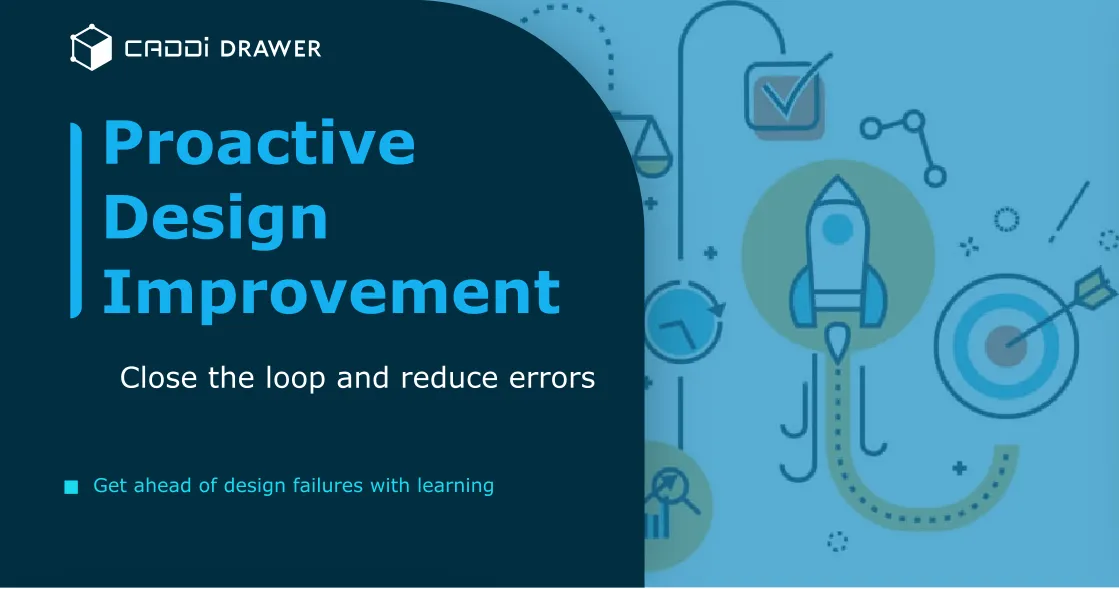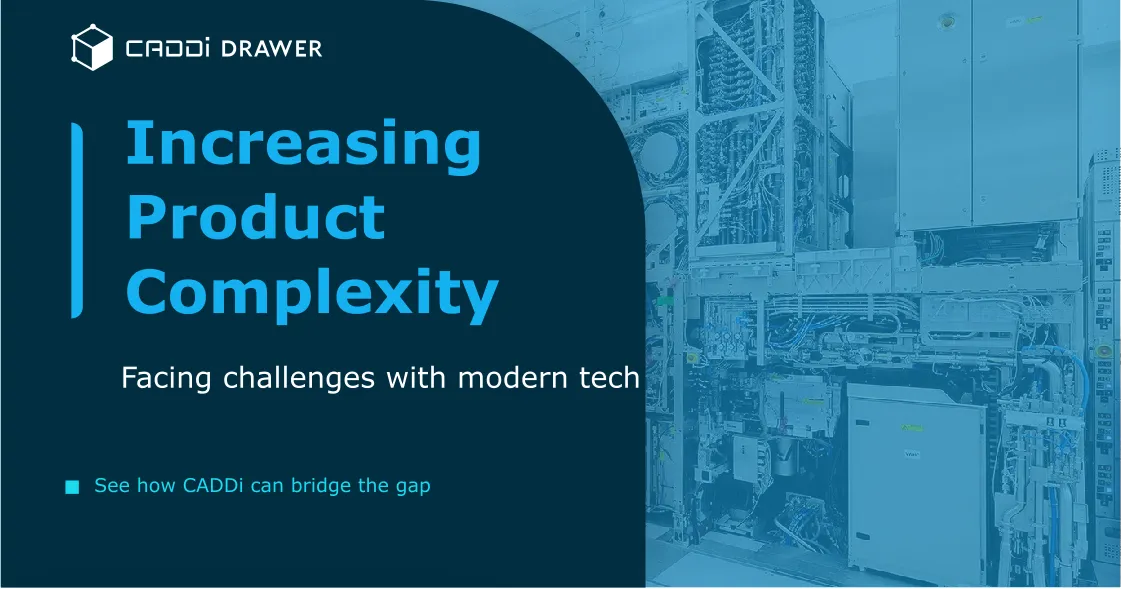Navigating Regulatory Compliance: How Data Visibility Drives Innovation and Reduces Risk

Table of Contents

Navigating Regulatory Compliance: How Data Visibility Drives Innovation and Reduces Risk
Manufacturing leaders often find themselves balancing two critical, sometimes conflicting, objectives: the relentless push for innovation and faster speed to market with the stringent demands of regulatory compliance. In today's fast-moving industrial landscape, particularly in highly regulated sectors like medical device manufacturing, regulatory bodies are essential for ensuring safety and consistency in treatment, but they can inadvertently slow down opportunities for innovation if managed improperly. This challenge isn't just a compliance hurdle; it represents a significant obstacle to achieving competitive advantage and sustained growth.
The good news is that by strategically leveraging data visibility, manufacturers can transform compliance from a reactive burden into a proactive enabler of innovation and risk reduction.
The Dual Challenge: Innovation Meets Regulation
The medical device industry, for example, is constantly evolving with new technologies that improve treatment plans. Transforming these new technologies into products quickly is a major challenge. However, every medical device company also faces the shared challenge of navigating regulatory bodies. Policies change year by year in response to new technologies and findings, requiring constant updates to testing and submission tasks. This dynamic environment means manufacturers need to constantly innovate new products while simultaneously meeting rigorous regulatory requirements. Improving speed to market is a massive priority, not only because the first mover gains a significant advantage, but also because new device delays can have life-or-death consequences.
Historically, this dual demand has often resulted in a slowdown. The most significant time savings in bringing a new product to market today are not in physical production or shipping, which have largely been optimized, but in data-based decision-making, such as sourcing component parts, revising designs, and estimating costs. When data is fragmented or inaccessible, it creates bottlenecks.
The Hidden Costs of Fragmented Data in Compliance
Without effective document management and data visibility, manufacturers face numerous risks, including production delays, non-compliance resulting in fines or legal issues, and inefficiency due to time wasted searching for information.
Common challenges arise from:
- Data silos where information is isolated within departments, leading to inconsistencies and hindering collaboration.
- Lack of standardized data formats, complicating information sharing.
- Absence of real-time data exchange capabilities, which can delay decision-making processes.
Critical information required for compliance, such as quality manuals, standard operating procedures (SOPs), inspection reports, test results, and certification documents, must be meticulously managed. If this information is scattered across different systems, on paper, or relies on the "tribal knowledge" of individual employees, it becomes difficult to access, verify, and apply consistently. This lack of access can lead to overlooking necessary information, missing past lessons, or experiencing a general disconnect that impedes continuous improvement.
Shifting to a Proactive, Data-Driven Compliance Strategy
To overcome these challenges, manufacturers need to adopt a proactive approach that leverages technology to create a centralized, searchable data ecosystem. This involves moving beyond reactive problem-solving, where issues are addressed after they arise, to a more predictive strategy, enabling teams to anticipate and mitigate risks.
The core idea is to aggregate and consolidate data from all relevant sources, effectively building a manufacturing data lake. This means pulling together information from:
- Product Lifecycle Management (PLM) systems.
- Enterprise Resource Planning (ERP) systems.
- Computer-Aided Design (CAD) files.
- Quality defect reports and quality metrics.
- Procurement and supplier data.
- Work instructions and specification sheets.
By centralizing and connecting this disparate data, organizations can gain a comprehensive and holistic understanding of their products, processes, and supply chain.
CADDi: Empowering Data Visibility for Compliance and Innovation
CADDi directly addresses the challenge of fragmented data by serving as an AI data platform for manufacturing that can consolidate information from multiple services, including PLM, ERP, and CAD. It links data about multiple products from multiple sources to provide a better understanding of the entire manufacturing process.
A key differentiator of CADDi is its ability to link all data to the part drawing itself, rather than relying solely on arbitrary ID numbers or labels. This means:
- Centralized Management and Searchability: CADDi Drawer facilitates the centralized management and searchability of quality documents and data, including SOPs, work instructions, and quality reports, linked directly to the drawings. This improved data visibility and accessibility ensures teams can quickly access necessary information to adhere to industry standards and regulations.
- Overcoming "Trapped Data": CADDi uses cutting-edge optical character recognition (OCR) technology to scan and extract data from PDF drawings, even handwritten ones, making them fully searchable. This applies to text within documents like SOPs, Work Instructions, and Quality reports, as well as footnotes in drawings.
- Streamlined Compliance Processes: By making it easier to retrieve past designs and associated data, CADDi allows for faster iteration on products to meet standards. This drastically reduces the time and effort spent searching for information that would otherwise take hours or days, streamlining compliance processes and reducing delays that often hinder innovation.
- Enhanced Strategic Analysis: CADDi links quality data from both internal and external production and supports procurement intelligence processes, which include analyses for supplier selection and management. This ensures that teams can identify and address quality risks proactively and maintain supplier compliance effectively.
The Benefits of Data-Driven Compliance with CADDi
Implementing a data-driven approach to compliance with CADDi enables several strategic advantages:
- Reduced Risk Exposure: With centralized, searchable data, manufacturers can ensure that all relevant information for compliance is readily available and verifiable, significantly mitigating the risk of non-compliance, fines, or costly issues.
- Accelerated Innovation and Speed to Market: By making it easier to find, compare, and iterate on past designs, CADDi empowers engineers to develop new products more efficiently, even under stringent regulatory requirements, thereby accelerating time to market.
- Improved Decision-Making: The ability to connect disparate data sources (design, procurement, quality, sales) around a single drawing provides a holistic view, enabling more informed and strategic decisions across departments.
- Enhanced Operational Efficiency: Reducing the time spent on manual data searches and cross-referencing frees up highly skilled employees to focus on higher-value, more creative tasks, boosting overall productivity and operational excellence.
- Preserving Institutional Knowledge: As experienced staff retire, CADDi's ability to digitize and democratize institutional knowledge, including compliance-critical data, helps preserve valuable "tribal knowledge" and ensures operational continuity and regulatory expertise.
By embracing data visibility and solutions like CADDi, manufacturing leaders can transform regulatory compliance from a complex constraint into a powerful lever for driving innovation, enhancing efficiency, and securing a competitive edge in a rapidly evolving global market. This proactive approach supports continuous improvement, ensures quality, and ultimately strengthens the bottom line.
Want to see how CADDi can help you meet regulatory compliance without losing time? Explore our interactive product tour or book a personalized demo.
Navigating Regulatory Compliance: How Data Visibility Drives Innovation and Reduces Risk
Manufacturing leaders often find themselves balancing two critical, sometimes conflicting, objectives: the relentless push for innovation and faster speed to market with the stringent demands of regulatory compliance. In today's fast-moving industrial landscape, particularly in highly regulated sectors like medical device manufacturing, regulatory bodies are essential for ensuring safety and consistency in treatment, but they can inadvertently slow down opportunities for innovation if managed improperly. This challenge isn't just a compliance hurdle; it represents a significant obstacle to achieving competitive advantage and sustained growth.
The good news is that by strategically leveraging data visibility, manufacturers can transform compliance from a reactive burden into a proactive enabler of innovation and risk reduction.
The Dual Challenge: Innovation Meets Regulation
The medical device industry, for example, is constantly evolving with new technologies that improve treatment plans. Transforming these new technologies into products quickly is a major challenge. However, every medical device company also faces the shared challenge of navigating regulatory bodies. Policies change year by year in response to new technologies and findings, requiring constant updates to testing and submission tasks. This dynamic environment means manufacturers need to constantly innovate new products while simultaneously meeting rigorous regulatory requirements. Improving speed to market is a massive priority, not only because the first mover gains a significant advantage, but also because new device delays can have life-or-death consequences.
Historically, this dual demand has often resulted in a slowdown. The most significant time savings in bringing a new product to market today are not in physical production or shipping, which have largely been optimized, but in data-based decision-making, such as sourcing component parts, revising designs, and estimating costs. When data is fragmented or inaccessible, it creates bottlenecks.
The Hidden Costs of Fragmented Data in Compliance
Without effective document management and data visibility, manufacturers face numerous risks, including production delays, non-compliance resulting in fines or legal issues, and inefficiency due to time wasted searching for information.
Common challenges arise from:
- Data silos where information is isolated within departments, leading to inconsistencies and hindering collaboration.
- Lack of standardized data formats, complicating information sharing.
- Absence of real-time data exchange capabilities, which can delay decision-making processes.
Critical information required for compliance, such as quality manuals, standard operating procedures (SOPs), inspection reports, test results, and certification documents, must be meticulously managed. If this information is scattered across different systems, on paper, or relies on the "tribal knowledge" of individual employees, it becomes difficult to access, verify, and apply consistently. This lack of access can lead to overlooking necessary information, missing past lessons, or experiencing a general disconnect that impedes continuous improvement.
Shifting to a Proactive, Data-Driven Compliance Strategy
To overcome these challenges, manufacturers need to adopt a proactive approach that leverages technology to create a centralized, searchable data ecosystem. This involves moving beyond reactive problem-solving, where issues are addressed after they arise, to a more predictive strategy, enabling teams to anticipate and mitigate risks.
The core idea is to aggregate and consolidate data from all relevant sources, effectively building a manufacturing data lake. This means pulling together information from:
- Product Lifecycle Management (PLM) systems.
- Enterprise Resource Planning (ERP) systems.
- Computer-Aided Design (CAD) files.
- Quality defect reports and quality metrics.
- Procurement and supplier data.
- Work instructions and specification sheets.
By centralizing and connecting this disparate data, organizations can gain a comprehensive and holistic understanding of their products, processes, and supply chain.
CADDi: Empowering Data Visibility for Compliance and Innovation
CADDi directly addresses the challenge of fragmented data by serving as an AI data platform for manufacturing that can consolidate information from multiple services, including PLM, ERP, and CAD. It links data about multiple products from multiple sources to provide a better understanding of the entire manufacturing process.
A key differentiator of CADDi is its ability to link all data to the part drawing itself, rather than relying solely on arbitrary ID numbers or labels. This means:
- Centralized Management and Searchability: CADDi Drawer facilitates the centralized management and searchability of quality documents and data, including SOPs, work instructions, and quality reports, linked directly to the drawings. This improved data visibility and accessibility ensures teams can quickly access necessary information to adhere to industry standards and regulations.
- Overcoming "Trapped Data": CADDi uses cutting-edge optical character recognition (OCR) technology to scan and extract data from PDF drawings, even handwritten ones, making them fully searchable. This applies to text within documents like SOPs, Work Instructions, and Quality reports, as well as footnotes in drawings.
- Streamlined Compliance Processes: By making it easier to retrieve past designs and associated data, CADDi allows for faster iteration on products to meet standards. This drastically reduces the time and effort spent searching for information that would otherwise take hours or days, streamlining compliance processes and reducing delays that often hinder innovation.
- Enhanced Strategic Analysis: CADDi links quality data from both internal and external production and supports procurement intelligence processes, which include analyses for supplier selection and management. This ensures that teams can identify and address quality risks proactively and maintain supplier compliance effectively.
The Benefits of Data-Driven Compliance with CADDi
Implementing a data-driven approach to compliance with CADDi enables several strategic advantages:
- Reduced Risk Exposure: With centralized, searchable data, manufacturers can ensure that all relevant information for compliance is readily available and verifiable, significantly mitigating the risk of non-compliance, fines, or costly issues.
- Accelerated Innovation and Speed to Market: By making it easier to find, compare, and iterate on past designs, CADDi empowers engineers to develop new products more efficiently, even under stringent regulatory requirements, thereby accelerating time to market.
- Improved Decision-Making: The ability to connect disparate data sources (design, procurement, quality, sales) around a single drawing provides a holistic view, enabling more informed and strategic decisions across departments.
- Enhanced Operational Efficiency: Reducing the time spent on manual data searches and cross-referencing frees up highly skilled employees to focus on higher-value, more creative tasks, boosting overall productivity and operational excellence.
- Preserving Institutional Knowledge: As experienced staff retire, CADDi's ability to digitize and democratize institutional knowledge, including compliance-critical data, helps preserve valuable "tribal knowledge" and ensures operational continuity and regulatory expertise.
By embracing data visibility and solutions like CADDi, manufacturing leaders can transform regulatory compliance from a complex constraint into a powerful lever for driving innovation, enhancing efficiency, and securing a competitive edge in a rapidly evolving global market. This proactive approach supports continuous improvement, ensures quality, and ultimately strengthens the bottom line.
Want to see how CADDi can help you meet regulatory compliance without losing time? Explore our interactive product tour or book a personalized demo.
.svg)



.svg)
.svg)
.svg)









